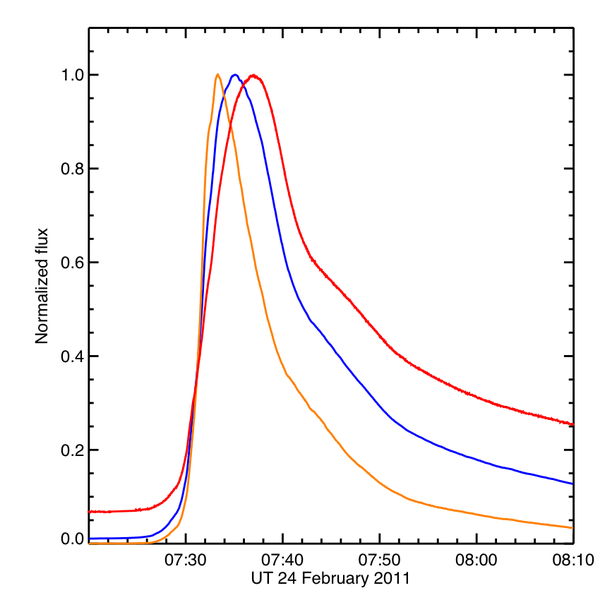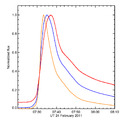File:151f2.png
From RHESSI Wiki

Size of this preview: 600 × 600 pixels
Full resolution (850 × 850 pixels, file size: 80 KB, MIME type: image/png)
Left: Comparison of the [ESP] zeroth-order signal ("QD"), in red, and the GOES low-energy channel (blue). Two features are striking: first, the EVE signal peaks later, and second, it has a substantial preflare excess. These both point to longer effective wavelengths. Right: A blow-up of the preflare variation, showing how much better the ESP photometry (1/4 sec binning, much lower noise) than GOES is (3 sec binning, much greater noise).
File history
Click on a date/time to view the file as it appeared at that time.
| Date/Time | Thumbnail | Dimensions | User | Comment | |
|---|---|---|---|---|---|
| current | 14:16, 10 May 2011 |  | 850×850 (80 KB) | Hhudson (Talk | contribs) | (Comparison of ESP soft X-ray band with the two standard GOES channels, each normalized to its maximum. The earliest to peak is GOES 0.5-4A (yellow), followed by GOES 1-8A (blue), and then ESP (red). This is in the sequence expected for longer and longer w) |
| 09:47, 9 May 2011 |  | 1,573×787 (24 KB) | Hhudson (Talk | contribs) | (Left: Comparison of the [ESP] zeroth-order signal ("QD"), in red, and the GOES low-energy channel (blue). Two features are striking: first, the EVE signal peaks later, and second, it has a substantial preflare excess. These both point to longer effective ) |
- Edit this file using an external application (See the setup instructions for more information)
File links
The following page links to this file: